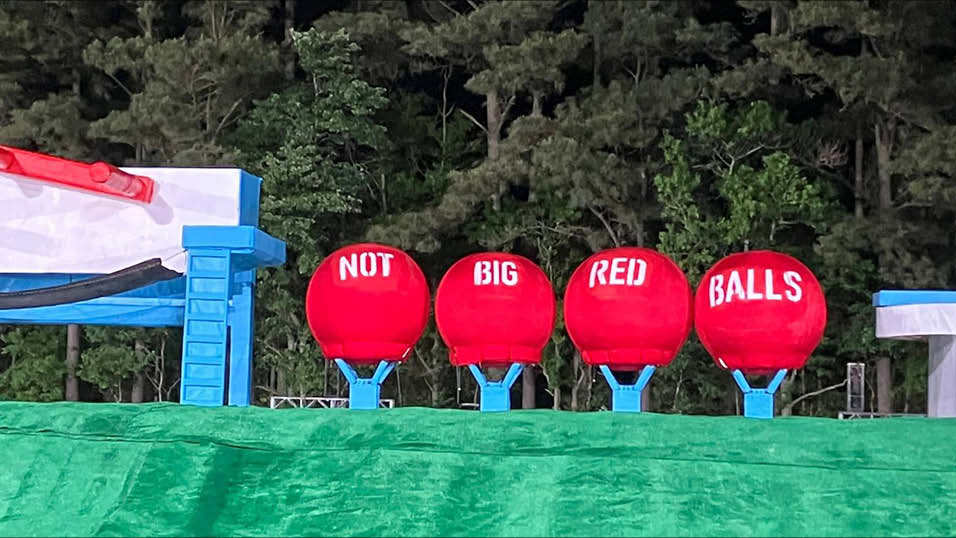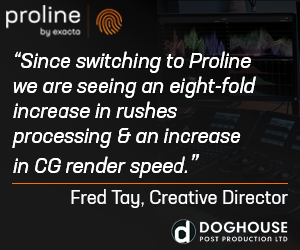As cameras become more powerful, a far greater range of lenses are being used to give shows a distinct look. Tim Dams talks to leading DoPs about the lenses that make their kit list
The changes that have swept through the camera market in recent years have made the choice of lens ever more important to a production. In particular, the surge in popularity of large sensor digital cameras means that lenses are now one of the most important factors for giving shows a distinct look.
Many opt for lenses that can counter the clinical sharpness of digital cameras.
The effect of quality lenses can also be more easily appreciated on digital cameras, given their advances in resolution, high dynamic range and wider colour spaces.
“Lenses are the last item a DoP has left these days to give a show a certain look and feel,” says DoP Micheal Snyman, whose credits include BBC hit The Night Manager.

It means a much wider range of lenses are now being used, from Primes (lenses with a fixed focal length), zooms as well as specialist lenses such as anamorphic or vintage.
They are being used on a much wider range of productions too, with high end lenses often being used on lower end productions. Indeed the lenses themselves often cost a lot more than the cameras they are put on.
The choices available also mean that a DoP will spend more time experimenting with lenses before a production to establish the perfect look.
DoP Gavin Finney, who won Baftas for his work on Wolf Hall and The Fear, says: “Lenses have a very powerful effect on the overall look and are always a starting point. Everything follows from the lens choice.”
In drama, many DoPs will use a combination of lenses – Primes from manufacturers such as Cooke, Arri and Zeiss, Leica and Panavision – as well as zoom lenses from the likes of Angenieux, Arri and Fujinon.
DoPs prefer to use Primes where they can. “I feel a prime lens will always give you better backgrounds and you stay true to your look,” says Snyman.
However, zooms bring the advantage of flexibility and speed during a shoot. DoP Brendan McGinty, who works across drama, commercials and factual and won an RTS Award for his photography on ITV’s The Secret Life of Twins, says Angenieux zooms have been the mainstay of Hollywood film-making for the past 30 years. “They are incredibly good zooms.”

Finney says he will use Primes where he can, but with very tight schedules being able to change focal length quickly is a great help. He cites new zooms like the Arri Alura. “They are even sharper and have better resolution than some Primes. They are also very neutral, so they match a wide range of other lenses.”
Zooms, of course, are most popular in sport, documentary and factual production where the action is often fast moving. Here lenses such as Canon’s 17-120 mm CN7 Cine-Servo zoom and Fujinon’s Cabrio 19-90mm T2.9 zooms are regarded as good quality lenses at the more expensive end.
The increasing dominance of the precise, often clinical look of digital cameras has also boosted the popularity of anamorphic and vintage glass.
Anamorphic lenses impart a shallower depth of field, oval bokeh (the photographic term for the way the lens renders out-of-focus points of light) and vignettting (a reduction of an image’s brightness or saturation at the periphery compared to the centre).
McGinty prefers modern, spherical glass but says anamorphic lenses bring a painterly quality to production, imbuing it with romance, nostalgia and sentimentality. In commercials, this can prove a big hit for a DoP. “The client will look at the monitor and think, ‘Wow – that is magical – you have transformed my world,’” says McGinty.
Finney says the decision to go with anamorphic or spherical is dependant on the story. “Like most DoPs, I love the anamorphic aspect ratio and would shoot practically everything this way if I could. Framing in 2.40 is beautiful, and dynamic, and the shallow depth of field of anamorphics gives you great separation between foreground and background.”
Finney notes that anamorphic lens choice is more limited and they are heavier and slower, so it depends on how a DoP is going to photograph the film. “We couldn’t have gone anamorphic on Wolf Hall because the lenses are too heavy and too slow. I tested a wide range of anamorphic lenses for a feature film coming up and it was amazing the range of different looks available within the anamorphic family. Iespecially liked the new Cooke anamorphic range.”
Most anamorphic lenses are expensive, but there are cheaper solutions available from manufactuers such as Holdan.
Vintage lenses can also help to counteract the over-sharpness of some modern cameras, as well as helping to evoke a period feel in drama. Their popularity is such that Cooke recently announced it is bringing back its Speed Panchro lenses from the 1920s-1960s, but with PL mounts for modern cameras.
 Q&A: Gavin Finney
Q&A: Gavin Finney
DoP credits Wolf Hall, The Secret Agent, Unforgotten, The Fear, Mr Selfridge
Which are the primary lenses in your kit list for most dramas? I always have a full set of primes from 14mm to 180mm and then two or three zooms. If we have two cameras, we usually share the same set.
What lenses did you use on Wolf Hall? We used Leica Summilux primes. They are very fast at a true T1.3 with no visible vignetting, loss of contrast or sharpness. This was crucial in being able to shoot just by candlelight. They also have virtually no chromatic aberration, but do have a slight pleasing bloom around highlights, which meant I didn’t have to use any filtration at night. Another selling point is they are around 1kg lighter than Master Primes, which counts for a lot when you are shooting hand-held 10 hours a day!
Which lenses did you use on the Secret Agent? We used Panavision Primos. They just had the right look for the way we were representing that period. It’s quite a gritty story and I liked the transparency of the Primos without looking too modern.
How long do you test with lenses before a shoot? A lot, I’m always going into test rooms, even before the main test period to try out different looks. Lenses have a very powerful effect on the overall look and are always a starting point. Everything follows from the lens choice.
Do you prefer one particular brand of lens? No preference, they are all good and all have their particular merits. We are very fortunate to have such a wide choice. Cookes are great for flattering faces, Ultra Primes are cooler and more clinical, Leicas are slightly warmer but very sharp, and amazing wide open. I’m always searching for a new look that is appropriate to the story we are trying to tell, so I wouldn’t want to be constrained by owning my own lenses or always using the same set.
 Q&A: Michael Snyman
Q&A: Michael Snyman
DoP credits The Night Manager, The British,
Of Kings and Prophets, The Red Tent
Which are the primary lenses in your kit list for most dramas? I like to use the Panavision Primo series for most of my drama work at the moment. I really enjoy the look of these lenses. I feel out of everything on the shelf these days they compliment HD incredibly well. If I’m shooting with multiple cameras on any given day I find HD cameras vary in colour greatly. The Primo’s have no or very little colour difference from lens to lens which is a really good starting point to try balance things up between cameras. They also flare beautifully and do incredibly well in the highlights and lowlights.
What lenses did you use on The Night Manager? I used the Primo’s on The Night Manager. They really do cover a great range of lens sizes. I liked them for their speed, colour and I they feel gave the show a certain quality, a kind of buttery feel.
Anamorphic or spherical? I don’t think you can say anamorphic vs spherical. There is no comparison to be made. Some shows beg for anamorphic and some don’t. They are so very different and they accomplish two very different looks. I feel like a lot of TV is missing anamorphic. It is such an amazing format and with the newer generation cameras it has become so much more cost effective to shoot with anamorphic. The only ones preventing us from shooting anamorphic are the format requirements from the broadcasters. I feel like they are missing a trick for sure.
Are you a fan of vintage lenses? I love to use vintage lenses. I feel they bring something to the party that HD could do with; they are softer, more cinematic and they break down the sharpness of everything. You have just got to know what you are dealing with in terms of look, colour and the actual mechanics of the lens.
 Q&A: Brendan McGinty
Q&A: Brendan McGinty
DoP credits The Secret Life of Twins, The Six Queens of Henry VIII, River Monsters: Lair of Giants
Which are the primary lenses in your kit list? For zooms, I only ever call on Angenieux. Tonally, they hit exactly what I would like from a zoom lens and integrate perfectly with the primes I favour. Its all about the relationship between the sharp area of the picture and the defocused area, and theirs’ is gorgeous. Master Primes are my favourite primes, not least because of their speed. They can hit T 1.3 and be sharp and linear. I also use Ultra Primes, particularly if I am looking for more lens flare in a project.
What lenses did you use on Secret Life of Twins? (McGinty won the RTS best photography award for Secret Life of Twins) I went for more exotic glass – the Russian Luma Tech Illumina Mk.II lenses. They are fast aperture lenses. We shot lot of that film wide open on these very fast lens at T1.3 – the same T stop as Master Primes. But what they uniquely had was tons of flare. Their bokeh is also very ‘painterly’. They are not lenses for something like a car commercial where you want any degree of precision. But they were perfect for the film. We wanted our foreground twins to sort of pop against a more painterly defocused background.
Anamorphic or spherical? I am definitely more in the world of spherical glass. I think that in my heart I am a ‘realist’ and I like to relish in the beautiful reality of the world. For certain projects, where I’m shooting something very romantic and I want the world to look photographically artificial, then I will employ anamorphic glass. I shoot a fair bit of ‘beauty’ work in the commercial world, and anamorphics can be great for that.
Do you prefer to invest in lenses or cameras? The investment in lenses is probably a safer bet. Camera formats come and go, but people are still shooting on lenses 100 years olds.
Tim Dams
Share this story


















